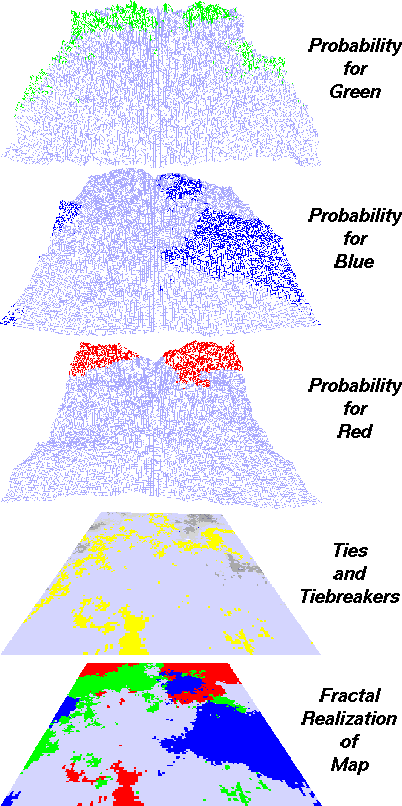Data collected since January 8, 1997
William W. Hargrove, Paul M. Schwartz, and Forrest M. Hoffman

Welcome to the Fractal Realizer homepage! This site will describe the capabilities of the Fractal Realizer tool and provide some background on the Turing Test. After reading this material, you can take the Turing Test of the Fractal Realizer to see if you can distinguish real maps from those generated by the Fractal Realizer. At the end of the test you may view statistics and graphs reporting the scores of all test takers. Since these are generated dynamically, the results presented will include the results of your own test! Comments from expert ecologists and mathematicians as well as the general public are available and make for interesting reading.
The Fractal Realizer generates synthetic landscape maps to users' specifications. The alternative landscape realizations are not identical to the actual maps after which they are patterned, but are similar statistically (i.e., the areas and fractal character of each category are replicated).
A fractal, or self-affine, pattern generator is used to provide a spatial probability surface for each category in the synthetic map. The Realizer arbitrates contentions among categories such that the fractal patterns of all categories are preserved in the resulting synthetic landscape (see sequence of pictures at right).
Sensitivity of stochastic simulations to prescribed input landscapes may be evaluated, or statistically similar landscapes can be generated as a hedge against pseudoreplication. Each synthetic landscape is one realization from an ensemble of possible fractal landscape combinations.
Read About the Turing Test of the Fractal Realizer
For additional information contact: